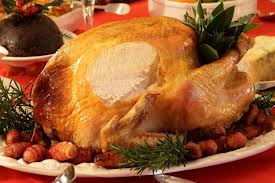Growth potential in Christmas traditional turkey market

Christmas turkey producers in the UK are urged to get into the market for joints and added value products in the annual newsletter from Paul Kelly to FarmGate Hatcheries poult customers.
“While whole bird sales do make up the majority of Christmas sales, the market for joints and added value products is growing.
This is a market you must get into in order to stay in the race,” says managing director Kelly. “Crowns and joints were averaging about £16 per kg at retail at Christmas — they can be very profitable.”
Providing added value products is one of his key pointers to future growth. He states: “Quality farm fresh turkeys have the potential to increase their market share in the long term, providing we as farmers work hard at ensuring consumers know where to buy our turkey and offer an easy order service with a range of added value products to satisfy demand.”
To make ordering easy producers must be using the internet, he says. “In 2013 just 11% of our retail orders were received via our traditional price list that is mailed out to our customers. Of all our retail orders online, 62% were taken out of office hours. You need to provide a 24/7 ordering service and it must be online — and not a telephone answering machine.”
This year FarmGate Hatcheries, of Danbury, Essex, is offering a range of five breeds in both bronze and white, along with the Black Roly Poly, with the option of as-hatched or sexed hens.
Paul Kelly refers to their ‘unique programme to select breeding stock that eats superbly’. He states: “I think I can confidently say I have tasted more turkeys of different breeds than anyone on the planet! I can assure you there are big differences in various breeding lines for both bronze and white. We have stopped breeding from two pure lines over the past three years because of relatively poor eating quality.
“Ultimately it is the experience your customers have at the Christmas dinner that is the key to repeat business.”
Day-old poults are available from mid May to mid September, with prices up by less than 1% on 2013 on account of the inflation in power and wages more than absorbing all the saving in feed cost.












